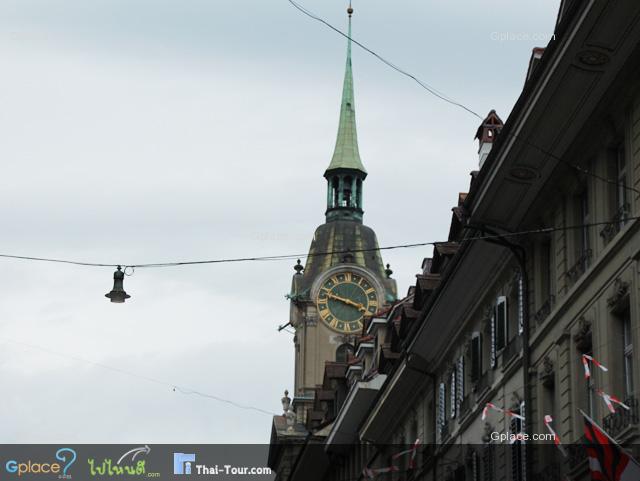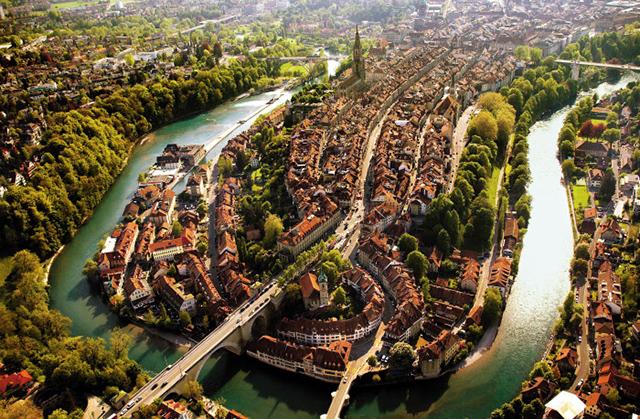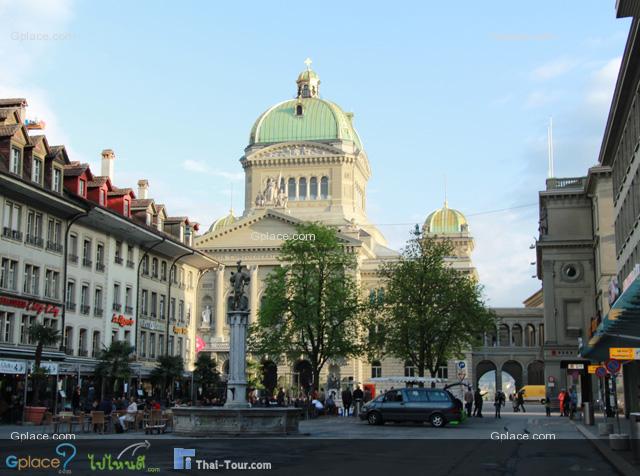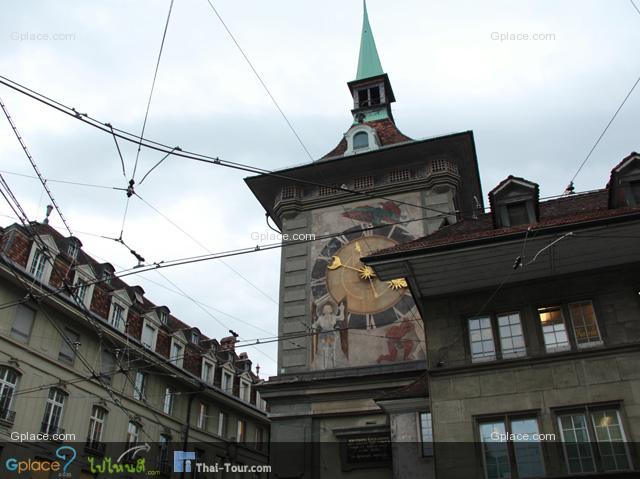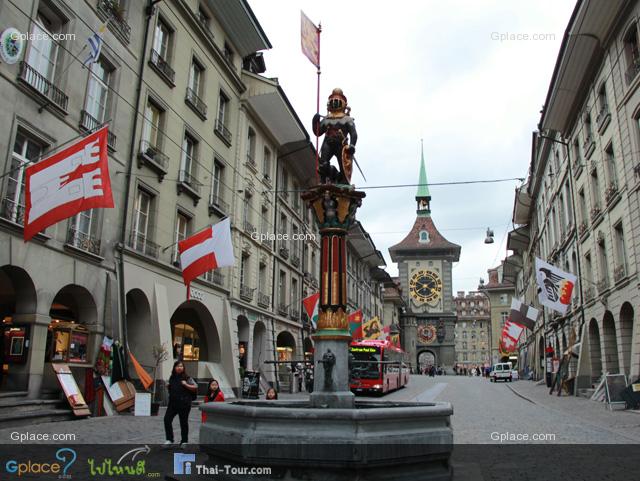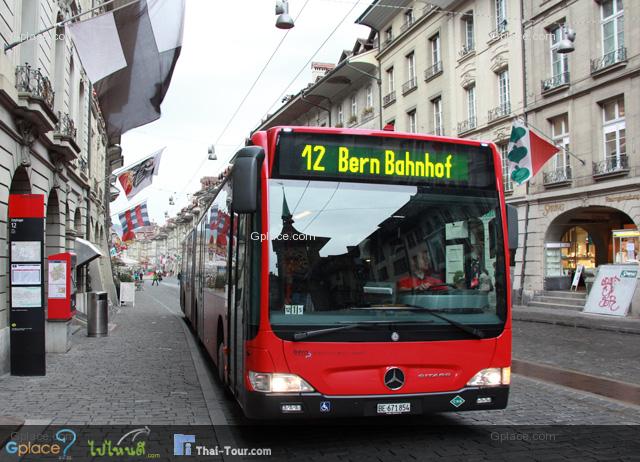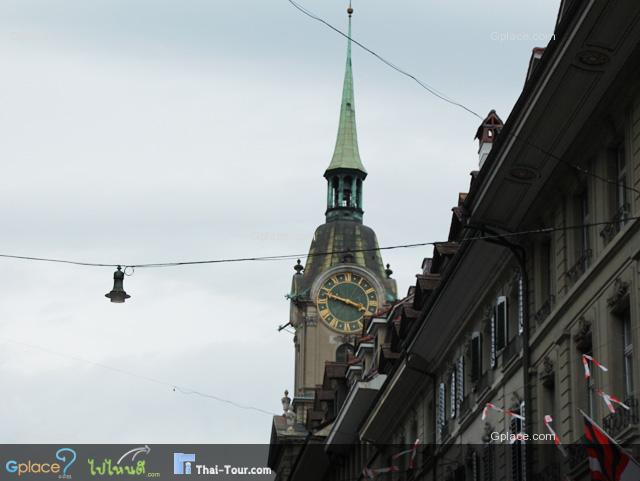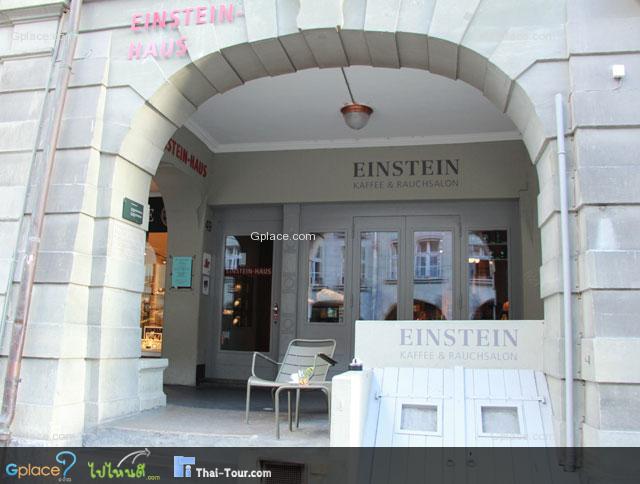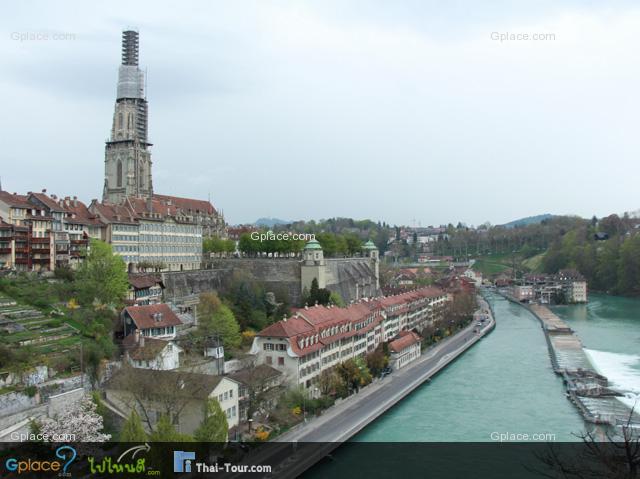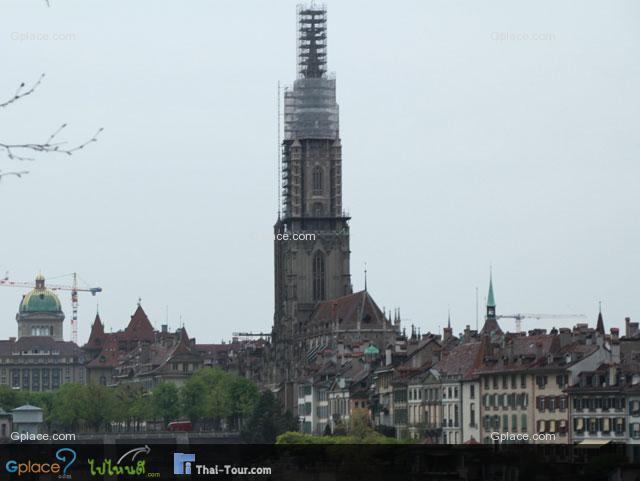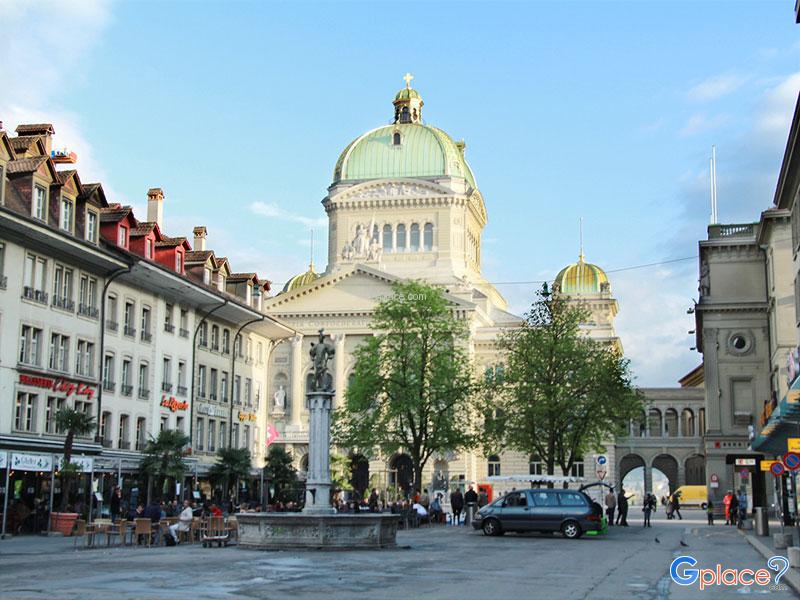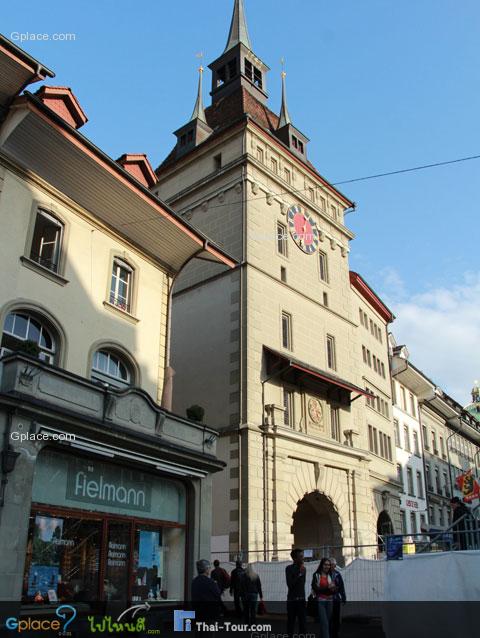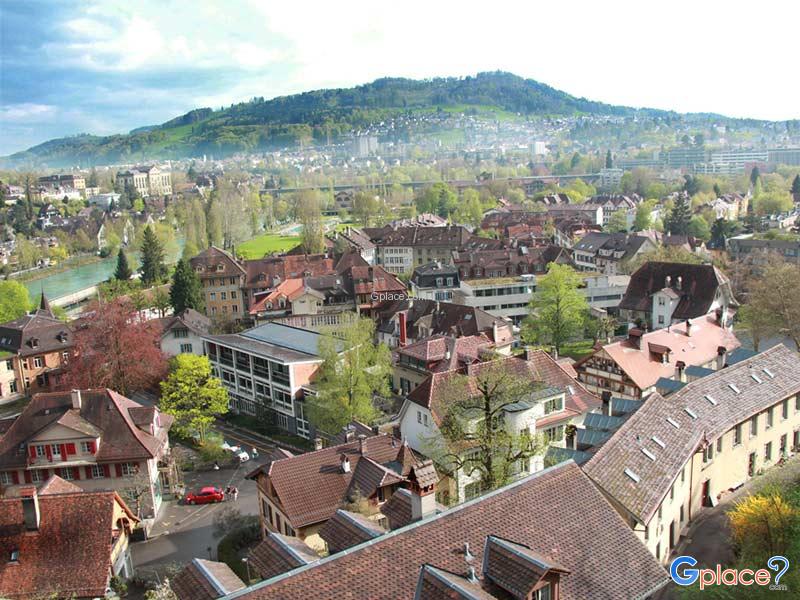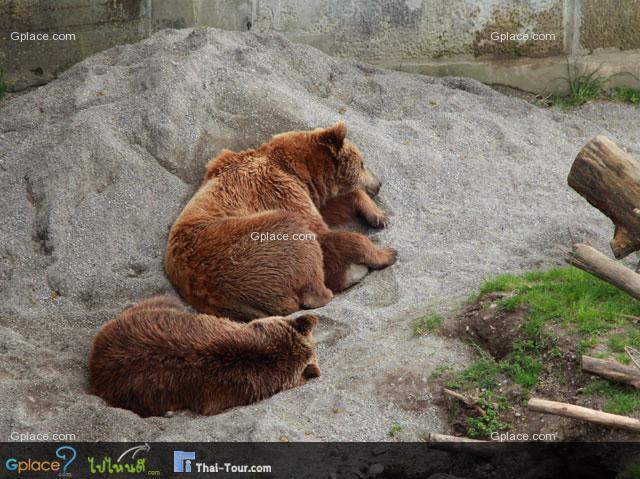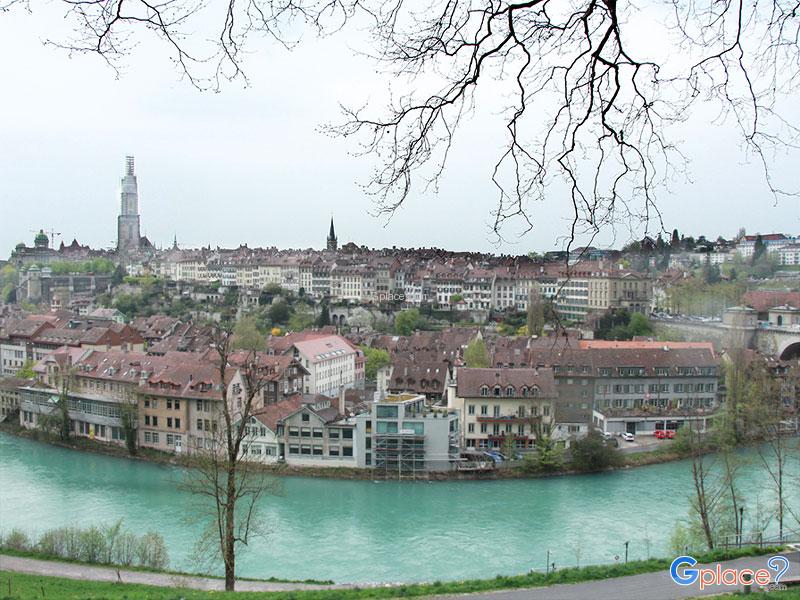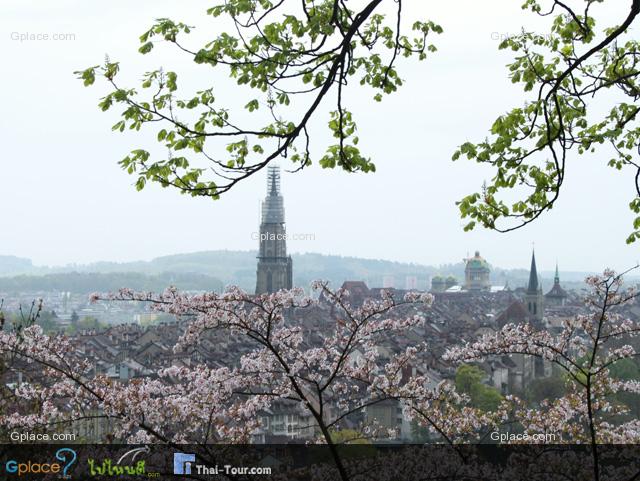“ Clock town Bear Park (south of the town) Renaissance sculpted fountains medieval cathedrals Einstein House View Point of the whole Old town (behind the bear park) ”
Bern Old Town, founded in 1191, rises majestically above a loop in the river Aare, bearing witness to the ambitious scale of urban development in medieval Europe. Declared UNESCO World Heritage in 1983, the Old City delights visitors with its pleasant, relaxed charm.
History
The earliest settlements in the Aare Valley date back to the Neolithic period. During the 2nd century BCE the valley was settled by the Helvetii. Following the Roman conquest of Helvetia a small Roman settlement was established near the Old City. This settlement was abandoned during the 2nd century AD. From that time until the founding of Bern the area remained sparsely settled.
Founding
Map of the city from 1638 showing the Old City as well as later defensive fortifications to the east. The history of the city of Bern proper begins with its founding by Duke Berchtold V of Zähringen in 1191. Local legend has it that the duke vowed to name the city after the first animal he met on the hunt, which turned out to be a bear. Both the name of the city (Bern can stand for Bär(e) n, bears) and its heraldic beast, come from this legend. At that time, much of today's Switzerland (then considered part of southern Burgundy) was under the authority of the house of Zähringen. The Zähringer leaders, although with no actual duchy of their own, were styled dukes by decree of the German king and exercised imperial power south of the Rhine. To establish their position there, they founded or expanded numerous settlements, including Fribourg (in 1157), Bern, Burgdorf and Morat.
The area chosen by Berchtold V was a hilly peninsula surrounded by the Aare river on three sides. This location made the city easy to defend and influenced the later development of the city. The long, narrow shape of the peninsula made the city develop as several long, parallel rows of houses. The only major cross streets (going north and south) developed along the city walls, which were moved to allow the city to expand. Therefore, the cross streets mark the stages of development in the Old City of Bern.
On the eastern end of the peninsula a small fort, called Castle Nydegg, was founded by Berchtold IV in the second half of the 12th century. Either when the fort was built or in 1191, the city of Bern was founded around the eastern end of the peninsula.
- Stroll through the old town, sight seeing the architectural structures in the medieval arcades
- The photo is credited by swiss-image.ch.
All reviews
(List 13 review)รีวิวเมื่อ 4 พ.ย. 57
cheap louis vuitton http://www.nsbenycalumni.org
รีวิวเมื่อ 15 พ.ค. 56
http://goo.gl/A2vmz
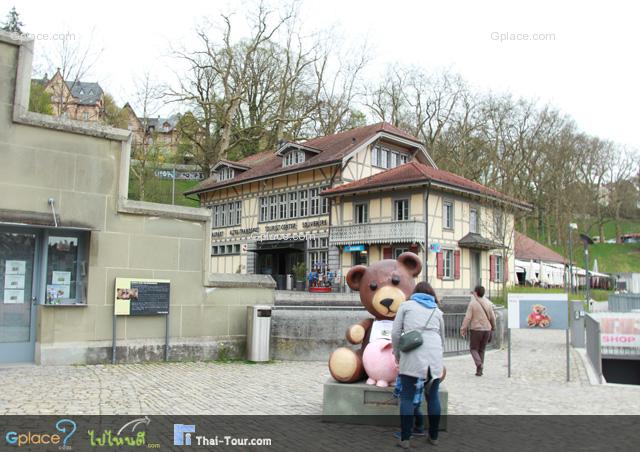
รีวิวเมื่อ 15 พ.ค. 56
http://en.gplace.com/parliament-building-bern-old-town
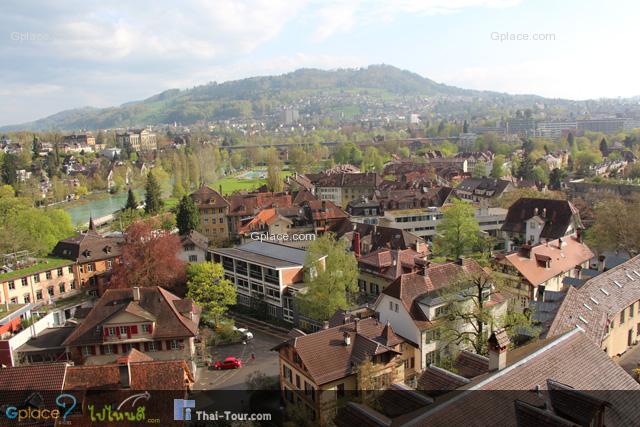
รีวิวเมื่อ 15 พ.ค. 56
http://en.gplace.com/kirchenfeldbrucke
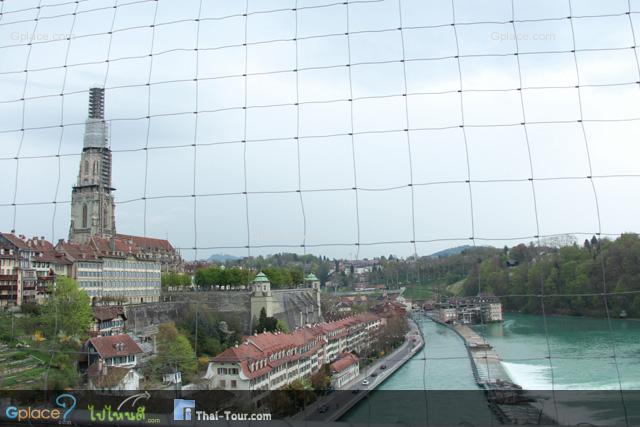
รีวิวเมื่อ 14 พ.ค. 56
รีวิวเมื่อ 14 พ.ค. 56
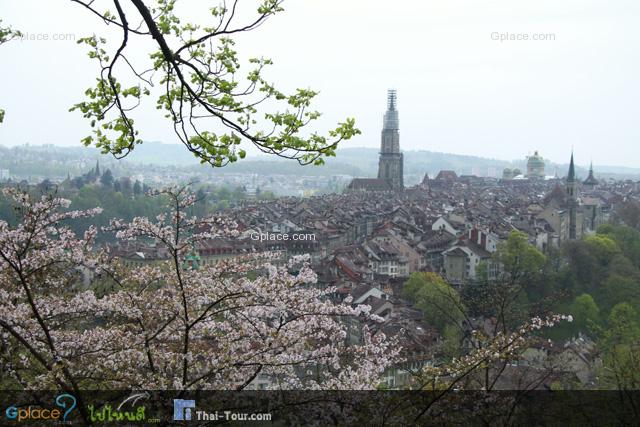
รีวิวเมื่อ 14 พ.ค. 56
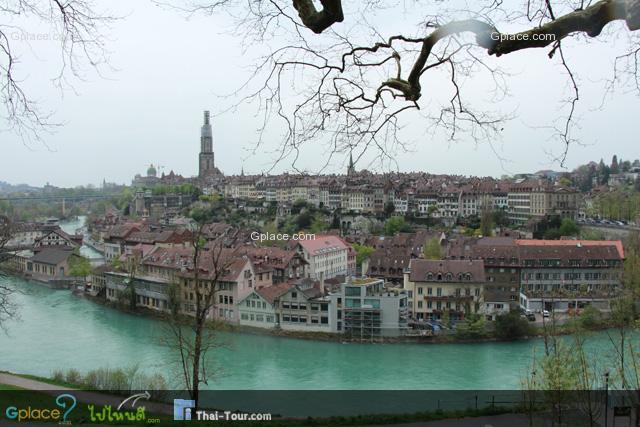
รีวิวเมื่อ 14 พ.ค. 56
Bear Park: http://en.gplace.com/bear-park-bern
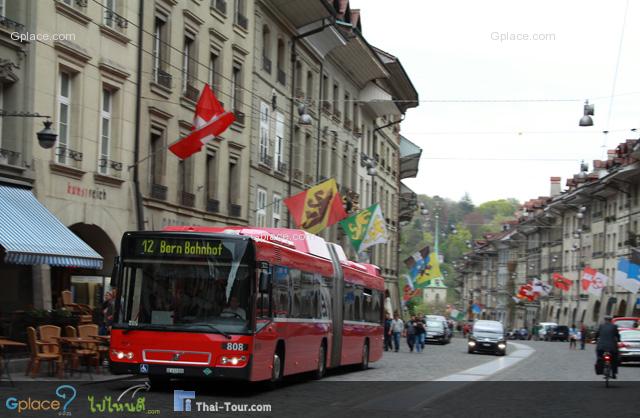
รีวิวเมื่อ 14 พ.ค. 56
The Simsonbrunnen or Samson fountain represents the Biblical story of Samson killing a lion found in Judges 14:5–20. According to the story, Samson was born to a sterile Israelite couple on the conditions that his mother and her child (Samson) abstain from all Alcohol and that he never shave or cut his hair. Because of his commitment to live under these conditions, Samson is granted great strength. As a young man he falls in love with a Philistine woman and decides to marry her. At this time, the Philistines ruled over the Israelites and Samson's decision to marry one causes great concern among his family. He calms their concerns and travels to marry his love. On the way he is attacked by the lion and with his incredible strength kills the lion. Later, he sees that bees have built a honeycomb in the lion's body. He uses this event as the basis of a riddle, which when not answered, gives him a pretext to attack the Philistines and lead an unsuccessful rebellion. The fountain, built in 1544 by Hans Gieng, is modeled after the Simsonbrunnen in Solothurn.
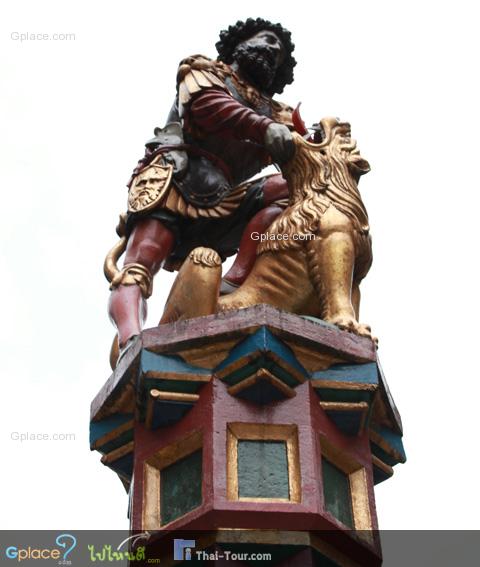
รีวิวเมื่อ 13 พ.ค. 56
รีวิวเมื่อ 13 พ.ค. 56
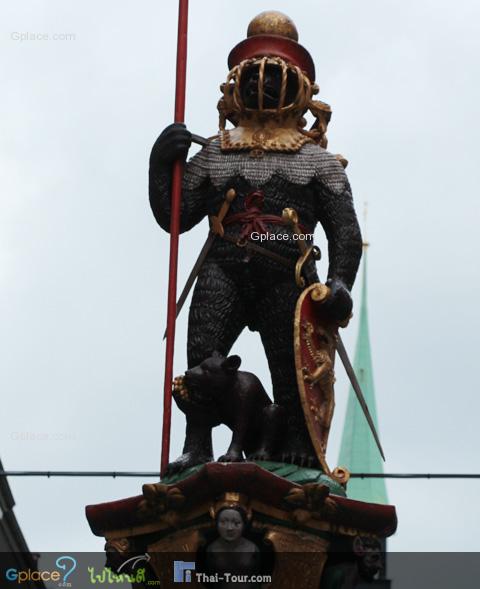
รีวิวเมื่อ 13 พ.ค. 56
The Zähringer fountain with Zytglogge in the background
The Zähringerbrunnen was built in 1535 as a memorial to the founder of Bern, Berchtold von Zähringer. The statue is a bear in full armor, with another bear cub at his feet. The bear represents the bear, that according to legend, Berchtold shot on the Aare peninsula as he was searching for a site to build a city.
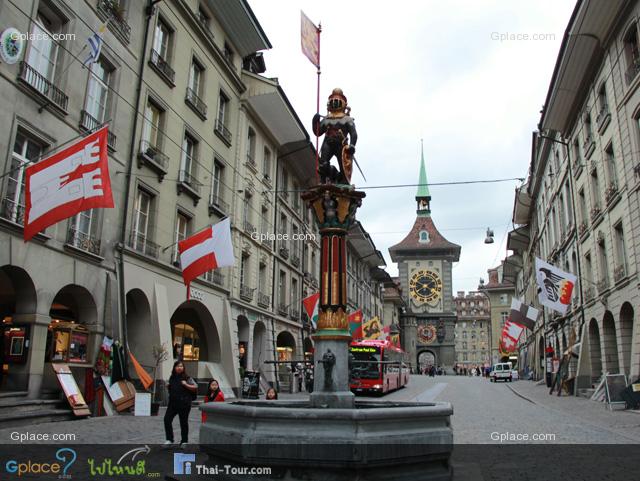
รีวิวเมื่อ 13 พ.ค. 56
The first organ in the new church was installed in 1804, and was replaced in 1933 by the second organ. The church has six bells, one of the two largest was cast in 1596 and the other in 1728. The four other bells were all cast in 1860. The interior is supported by 14 monolithic columns made of sandstone and has a free-standing pulpit in the northern part of the nave. Much like the St. Pierre Cathedral in Geneva, the Church of the Holy Ghost holds about 2,000 people and is one of the largest Protestant churches in Switzerland.
From 1693 to 1698 the hospital's chief minister was the Pietist theologian, Samuel Heinrich König. In 1829 and 1830, the vicar of the church was the poet Jeremias Gotthelf.
